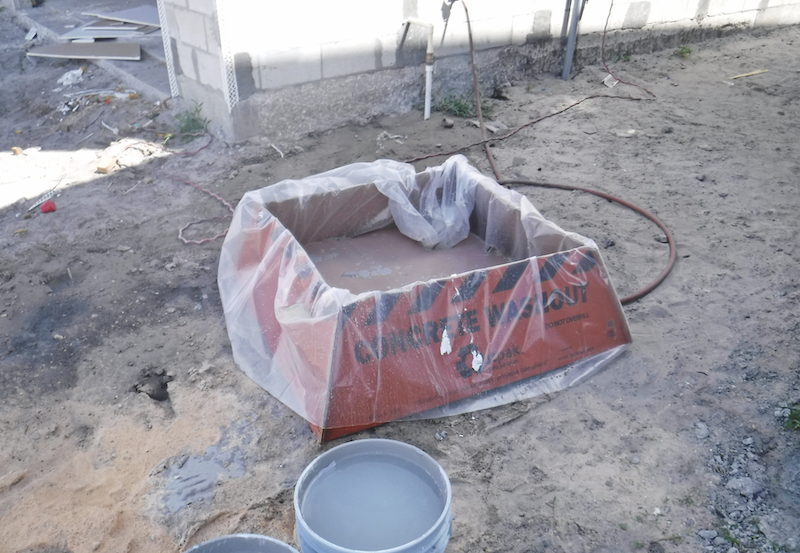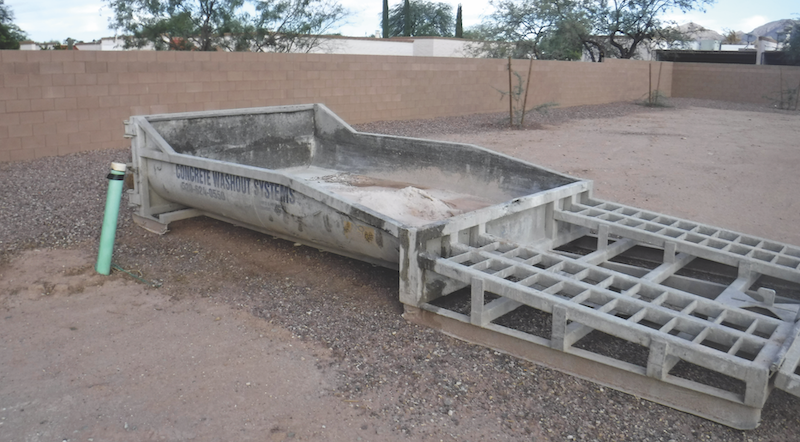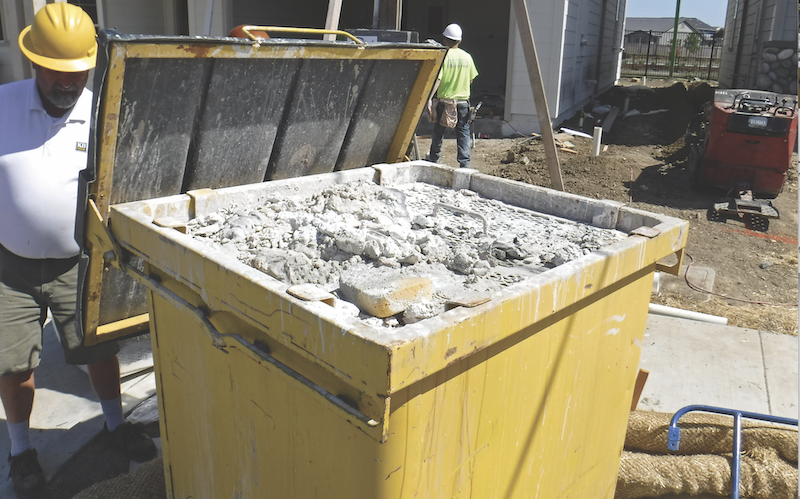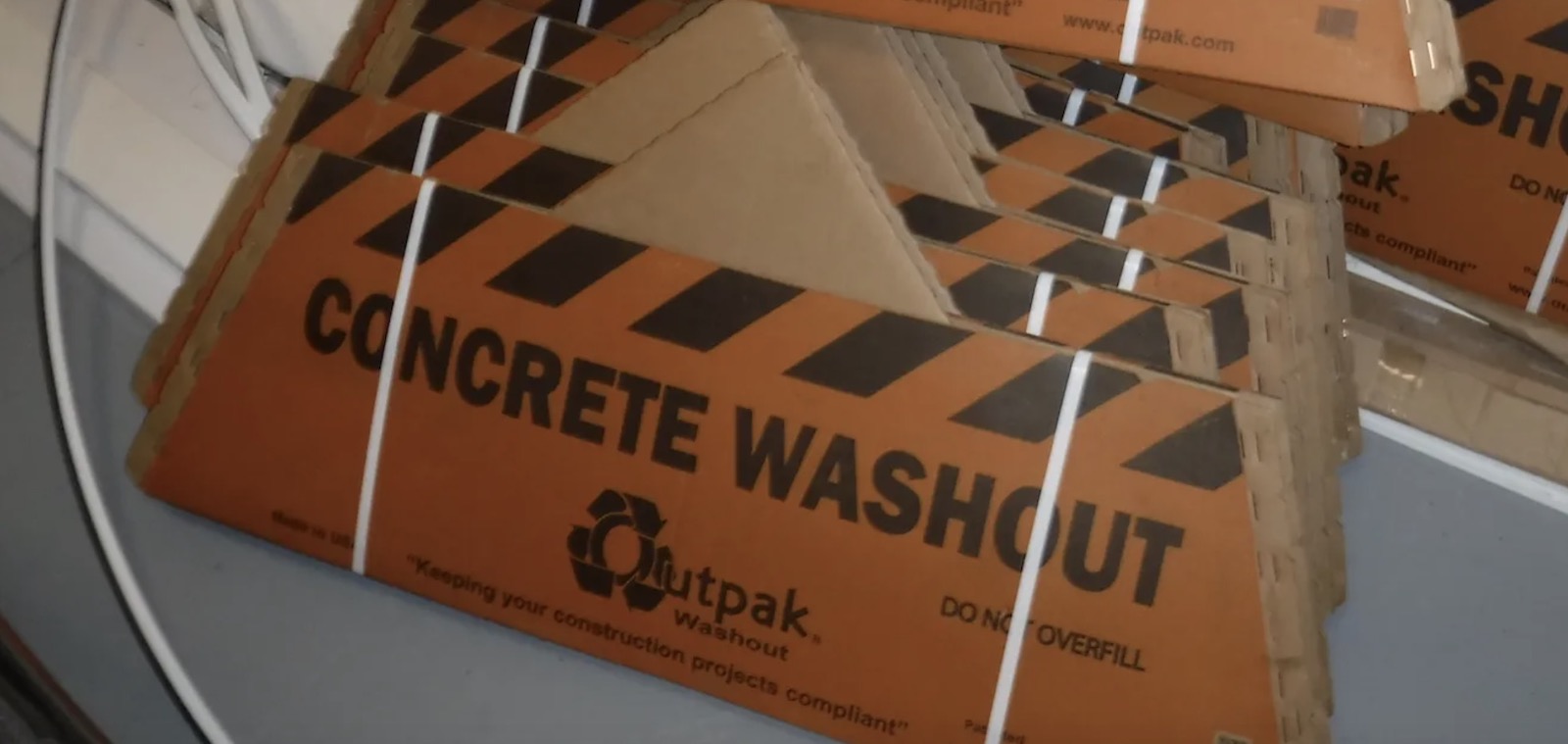Washout stations are a crucial piece of every development’s Stormwater Pollution Prevention Plan, as neglecting them can have negative impacts on the environment and a builder’s profitability.
While concrete washouts are generally properly managed, we see problems with other materials on nearly every jobsite that could come back to bite your budget, as well as your reputation.
Consider the Environmental Impact of Washouts
Simply, liquid slurries from concrete, paint, and plaster are corrosive and alkaline. If dumped on the ground, they can kill plant life and make it difficult to sustain landscaping—an expensive mistake. Worse, if they are allowed to percolate into the soil, they can contaminate rivers, lakes, coastal estuaries, and groundwater.
Unlike hardened concrete, which is relatively benign, liquid concrete wash water has a high pH and is caustic. It also contains hazardous metals that can contaminate groundwater.
It should come as no surprise that the Environmental Protection Agency wants to keep this stuff off and out of the ground, and has been using fines as high as $11,000 per day per project as an incentive for proper disposal. One developer we know got hit with a $68,000 fine for pollution law violations, and poorly designed concrete washouts were specifically mentioned in the citation.

Concrete Practices and the Need for Concrete Washouts
Compliance for concrete deliveries is generally good on most jobsites because truck drivers routinely and properly wash out their chutes.
But we do see some problems, especially with drivers trying to maneuver their pump trucks into roll-off concrete washout stations. Another issue is that most concrete washouts are lined with plastic sheeting, which is supposed to hold the water until it evaporates, after which the hardened concrete can be safely hauled away. Unfortunately, a lot of these sheets are leaky, allowing washout to seep into the soil.
Despite these shortfalls, a typical builder or developer at least understands the need for concrete washouts; not so with other phases of construction.
[EPA Stormwater Best Management Practice for Concrete Washouts]

A Slurry of Problems When It Comes to Paint, Drywall, and Plaster
If common practice is any indication, few builders seem to remember that the law also requires washout stations for painting, drywall, and plastering equipment.
Compliance for those materials is poor to nonexistent on a lot of jobs, and I often see painters and drywallers outside the garage spraying brushes and trowels with a garden hose and leaving the mess on the ground.
Fortunately, creating an EPA-compliant washout for these materials is neither expensive nor difficult. Some disposal companies will bring a steel bin to the job for this purpose, while do-it-yourself options include a simple 2x8 box or a prefabricated, EPA-compliant washout.
Creating an EPA-compliant washout is neither expensive nor difficult.
Those last two options should be lined with plastic, and (as with concrete) once the paint or plaster slurry dries and the water has evaporated, the solids should be safely put in the dumpster. In addition, there are polymer-based powders that more quickly harden the slurry, making it EPA-compliant and ready for the landfill.
However, job supervisors do need to make enforcement of these solutions a standard part of the routine for crews and trade partners.

One Impact You May Not Have Considered
While paint waste and plaster spatter may seem to be small oversights, allowing insufficient washouts for those materials can have consequences beyond environmental impacts and EPA fines.
Homebuyers who see trades dumping paint or plaster slurry onto the ground get a bad impression of your home building company. They naturally wonder if that sloppiness reflects the standard of the rest of your quality-control program and will be likely to scrutinize your work more closely.
John Koenig drives quality and performance in home building as a building performance specialist of the PERFORM Builder Solutions team at IBACOS.
Access a PDF of this article in Pro Builder's April 2020 digital edition












